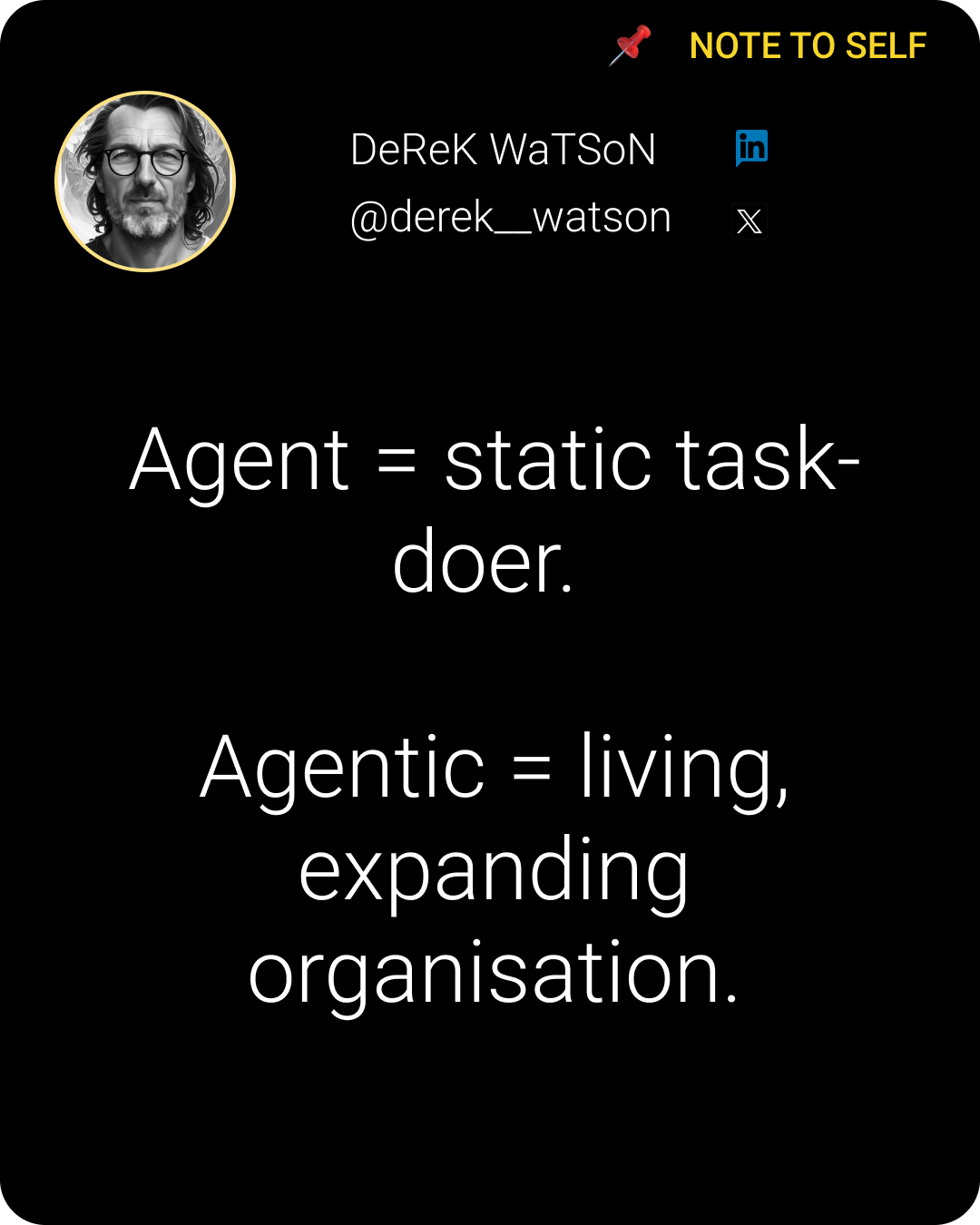Here’s your Monday dose of The AI Brief.
Your weekly dose of AI breakthroughs, startup playbooks, tool hacks and strategic nudges—empowering founders to lead in an AI world.
📈 Trending Now
The week’s unmissable AI headlines.
💡 Innovator Spotlight
Meet the change-makers.
🛠️ Tool of the Week
Your speed-boost in a nutshell.
📌 Note to Self
Words above my desk.
📈 Trending Now
⚡️ AI Winter or Bubble Burst? Global “Vibe Shift” Rocks the Industry
August brought a sudden shift in AI sentiment. What was once the darling of Wall Street and the hottest job market has now cooled sharply. Meta, which only months ago was hiring aggressively, froze recruitment and hinted at deep job cuts. Sam Altman even warned openly of an “AI bubble”, a comment that echoed as Palantir, Nvidia, Oracle, and chipmakers saw up to 16% wiped from recent highs.
The real blow came from MIT: a report claiming 95% of enterprise AI projects fail to generate meaningful revenue. Coreweave, once the GPU poster-child, shed 40% of its valuation in a week, while “AI darlings” scrambled for low-margin government contracts just to keep the lights on. Wall Street has responded by rotating portfolios—ditching speculative bets in favour of infrastructure with tangible earnings.
This isn’t the end of AI—more a brutal shake-out. The long-term case for the technology stands, but only pragmatic, ROI-driven solutions will win capital now. One thing’s clear: hype no longer protects you when sentiment turns this fast.
👉 Founders: Validate fundamentals, cut burn, and sharpen product-market fit—before the market does it for you.
🏛️ Texas Takes Aim at AI Chatbots
Texas’ Attorney General has launched probes into Meta and Character.AI for promoting chatbots as “empathetic counsellors” for teenagers—without disclaimers. Accusations include inappropriate chats and misleading health advice.
👉 Founders: Expect tighter scrutiny if you’re building AI products for young people or advice-based services.
🤖 GPT-5 & Grok 4 Land
OpenAI’s GPT-5 and xAI’s Grok 4 have gone live. GPT-5 claims a 40% leap in complex reasoning with a new “thinking mode”, while Grok 4 has gone free worldwide. The bar for reasoning, multilingual support, and developer-friendliness has just been raised again.
👉 Founders: Users will now expect smarter, clearer, more transparent models—build with that in mind.
JOIN US AT EXPAND NORTH STAR.
🚨 Meta in Hot Water over “Sensual” Chats with Children
Meta is under fire after leaks showed its chatbot engaged in provocative chats with children and even gave questionable medical advice. The backlash is growing across regulators, media, and parents alike.
👉 Founders: Age-gating, disclaimers, and transparent content filters are non-negotiable now.
🇪🇺 EU AI Act: New Rules in Force
As of 2nd August, sweeping EU AI Act rules apply to general-purpose AI. Model providers must now meet stricter documentation, copyright, and governance obligations.
👉 Founders: Launching in the EU? Be watertight on compliance—or face penalties.
🎬 YouTube Quietly Editing Videos with AI
Reports suggest YouTube has been altering users’ videos with AI—without notice or consent. Creators and privacy groups are furious, warning of eroding trust.
👉 Founders: Be transparent—consent is the new currency.
💼 Global AI Layoffs Surge
The wave of AI-driven automation is fuelling mass layoffs, across engineering, support, and beyond. Mentions of “AI skills” in job ads are up 400%, while unions warn reskilling is lagging badly.
👉 Founders: Invest in upskilling and show clearly where AI augments—not replaces—your teams.
💡Innovator Spotlight
👉 Headline
TinyFish Secures $47M to Build AI Agents That Browse the Web Like Humans
👉 Who they are:
– TinyFish, a Palo Alto AI agent startup automating complex web tasks for enterprises.
👉 What’s unique:
– They’ve raised $47 million in Series A this week to scale AI agents that mimic human browsing—scraping pricing, inventory, and site changes without fragile scripts. It’s counter-intuitive because most still rely on static LLMs or brittle crawlers—TinyFish instead builds adaptable agents that execute actions, not just generate text. Their tech already works at scale with clients like Google, showing founders that AI can replace not only logic but browsing itself.
👉 Pinch-this lesson:
– Build agents that do, not just reply—automate real-life actions, not just generate outputs.
🛠️ Tools of the Week
1. TinyFish Enterprise Web Agents
👉 Find out more
What it does: Empowers founders to deploy resilient AI agents for web browsing, price tracking, and inventory monitoring at scale.
Why founders should care: You can replace brittle scripts with outcome-focused agents that stay robust across site changes.
Quick start tip: Sign up, choose a prebuilt agent template, and start automating target site workflows instantly.
2. Amazon Alexa Plus Web Agent
👉 Find out more
What it does: Enables Alexa to autonomously browse services like Thumbtack to book real-world errands via remote browser control.
Why founders should care: Demonstrates how consumer agents can execute real-world tasks, hinting at commercial agent-led workflows.
Quick start tip: Explore Alexa Plus capabilities if you’re developing user-facing agent use cases.
3. Google Nova Agent Trials
👉 Find out more
What it does: Runs complex, multi-step web tasks in simulated environments for learning, including tasks like “find a plumber.”
Why founders should care: Highlights enterprise-level agent testing and autonomous learning at scale from real-world simulations.
Quick start tip: Watch Amazon’s nova-agent use cases for a template in simulation-based agent training.
4. Artisan Autonomous Agent Platform
👉 Find out more
What it does: Launches AI “digital colleagues” that autonomously handle tasks in areas like sales, recruiting, and support.
Why founders should care: You can embed intelligent agents directly into workflows to replace repetitive human tasks.
Quick start tip: Explore Artisan’s platform and deploy a BDR agent to kickstart your workflow automation.
5. Manus Autonomous AI Agent
👉 Find out more
What it does: Operates as a fully autonomous AI agent capable of dynamic planning and decision-making without continuous guidance.
Why founders should care: Offers a leap toward agents that think and act independently—ideal for visionaries building next-gen automation.
Quick start tip: Visit the site and apply to experiment with truly self-directed AI agents today.
6. AgentMesh Multi-Agent Dev Framework
👉 Find out more
What it does: Organises multiphase software development tasks with agents like planner, coder, debugger, and reviewer working collaboratively.
Why founders should care: Lets you automate end-to-end coding pipelines using agent-to-agent orchestration.
Quick start tip: Read the preprint to prototype a multi-agent coding workflow today.
7. OmniNova Multi-Agent Automation Framework
👉 Find out more
What it does: Coordinates multi-tiered agents handling web search, crawling, planning, and supervision in a structured hierarchy.
Why founders should care: Enables scalable, efficient multi-agent orchestration—key for complex web-interaction tasks.
Quick start tip: Review the open-source implementation and test a coordinator-agent setup.
8. AI2Agent Deployment Framework
👉 Find out more
What it does: Automates deployment of AI agents with self-debugging and environment adaptation.
Why founders should care: Dramatically simplifies setting up autonomous tools in production with minimal developer friction.
Quick start tip: Check out the demo video and trial the framework with a lightweight agent in your stack.
9. Base44 Conversational App Builder
👉 Find out more
What it does: Lets founders build full-stack applications through a chat interface—deploying both frontend and backend via natural language.
Why founders should care: Inspires how agentic interfaces could orchestrate end-to-end development workflows.
Quick start tip: Try crafting a sample agent in Base44’s chat to prototype your automation front end.
10. CrewAI Toolkit (via LangChain tools)
👉 Find out more
What it does: Provides modular tools enabling agents to fetch, summarise, and post content—built on CrewAI’s agent orchestration.
Why founders should care: Demonstrates how to assemble agent workflows for content or web interaction use-cases using composable tools.
Quick start tip: Use the CrewAI example to prototype an agent flow for your data extraction and action pipeline.
📌 Note to Self
Thank you for reading. If you liked it, share it with your friends, colleagues and everyone interested in the startup Investor ecosystem.
If you've got suggestions, an article, research, your tech stack, or a job listing you want featured, just let me know! I'm keen to include it in the upcoming edition.
Please let me know what you think of it, love a feedback loop 🙏🏼
🛑 Get a different job.
Subscribe below and follow me on LinkedIn or Twitter to never miss an update.
For the ❤️ of startups
✌🏼 & 💙
Derek







